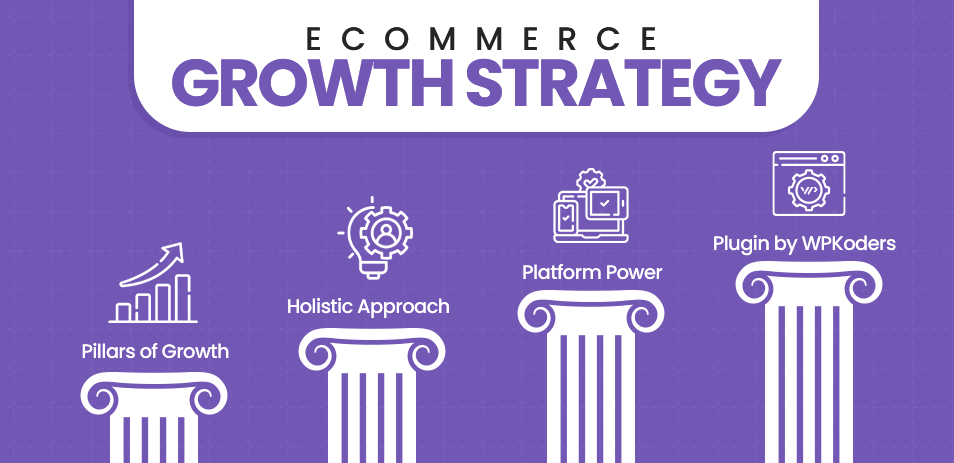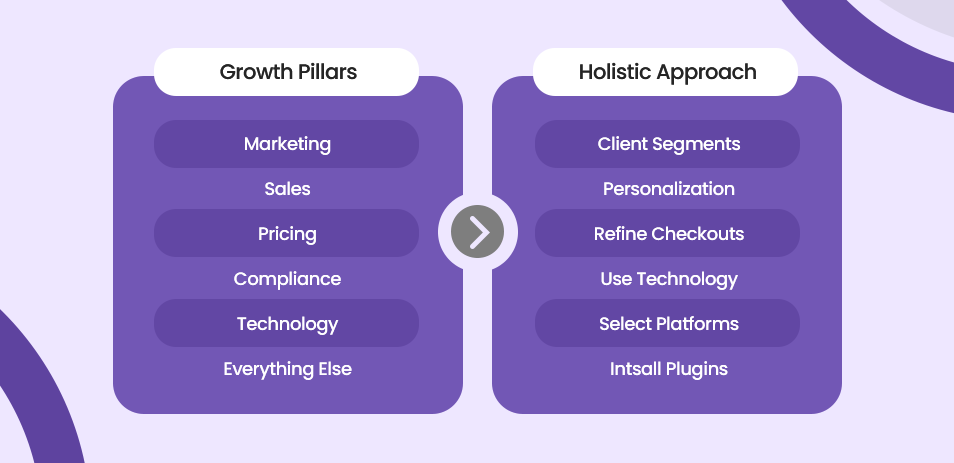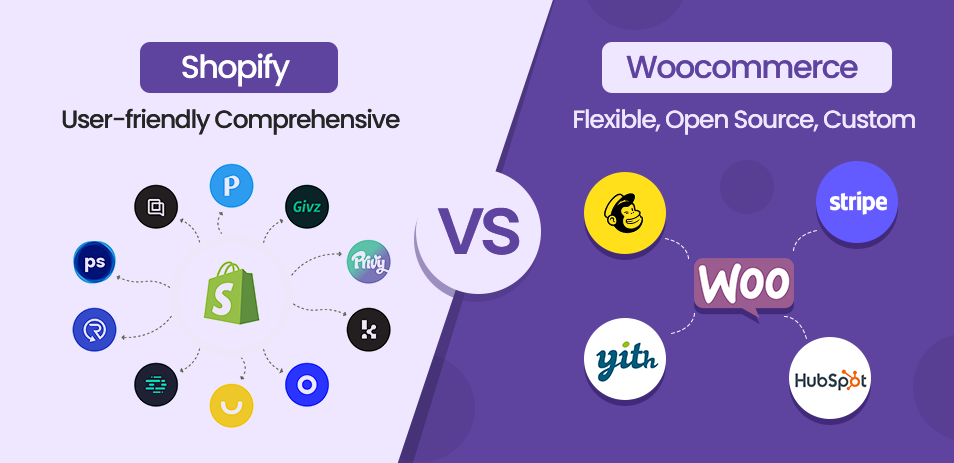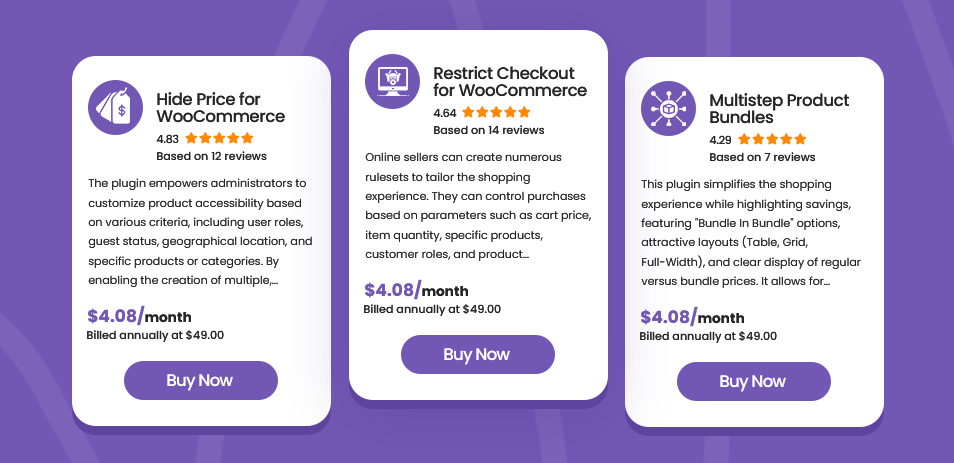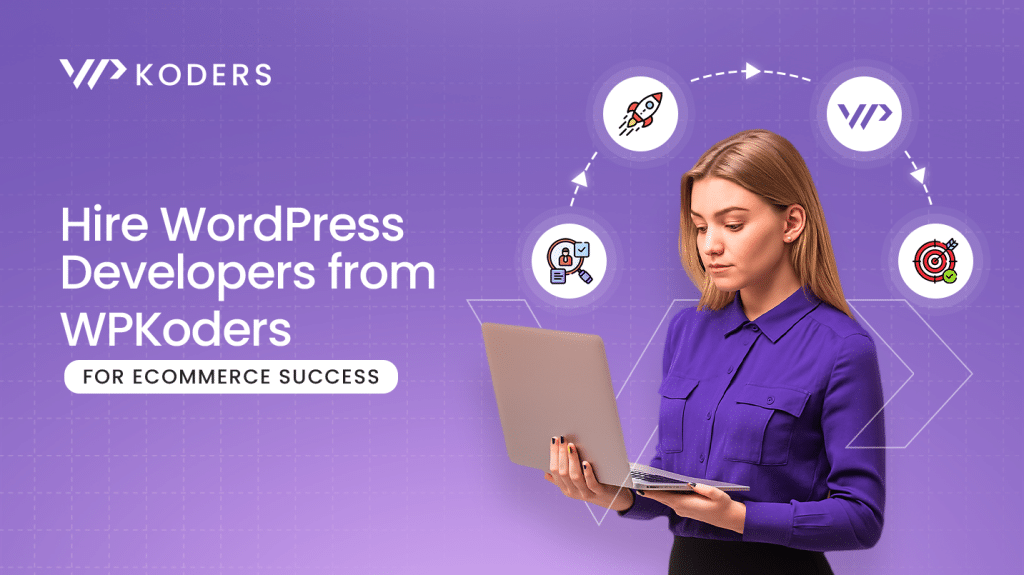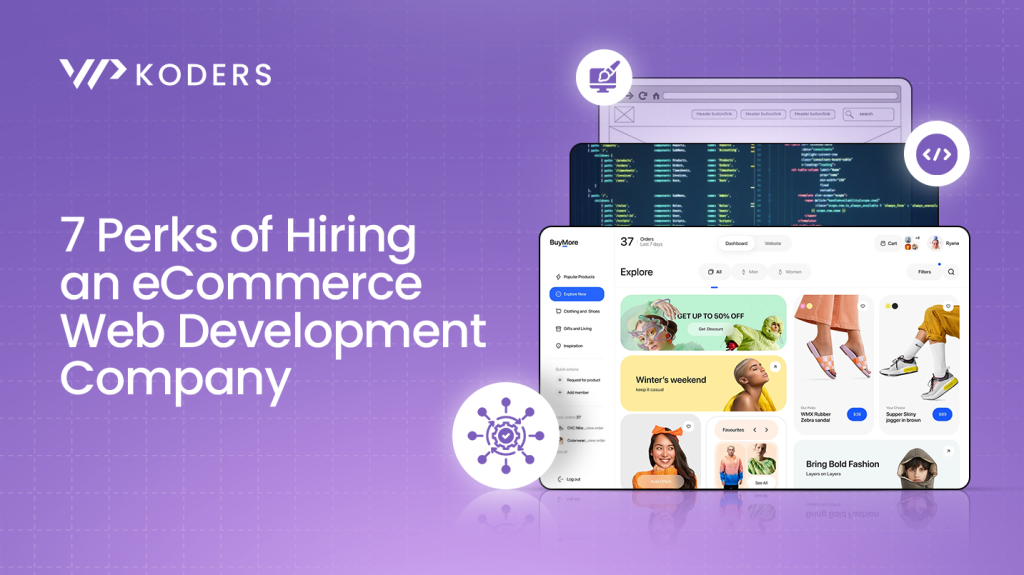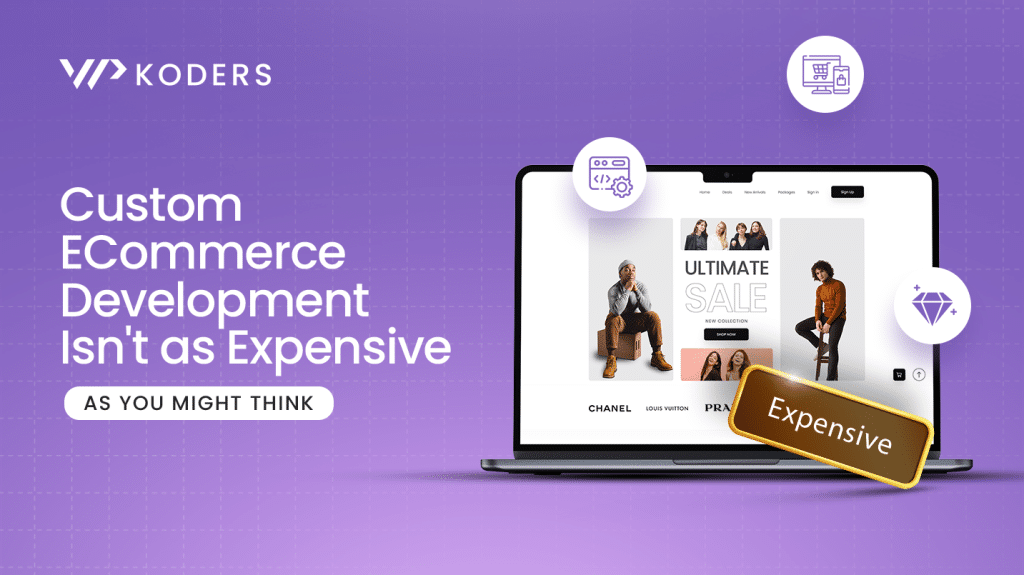It all starts with a click, but the real story begins way before that. By the end of this blog, you will have a clear sense of what it takes to build success. Having an online store isn’t enough, especially when the whole world is selling online. eCommerce growth strategy isn’t a single magic spell; it’s a meticulous arrangement of interconnected strategies. Think of it as a grand unification theory for your business, where sales, pricing, marketing, compliance, and technology converge to create an unstoppable force. So, how do you arrange your words to cast the spell of sustainable growth and outperform your competition? Let’s explore.
The Pillars of eCommerce Growth Strategy
True growth isn’t about isolated tactics; it’s about how each piece of the puzzle fits together. That’s exactly why we list here the strategies that come together to make it all happen.
Marketing Strategy – Telling What You’re Selling
An effective marketing strategy relies on preparing beforehand for visitors, no matter where they enter from in your sales pipeline. It’s like receiving visitors at the front door and taking them where they intend to find desirable value. Even if it requires to cordon off certain areas, you must.
Sales Strategy – Beyond the Transaction
The end goal is not just to close a sale but to build a lasting, profitable relationship. It encompasses everything from your offerings to customer support and post-purchase service. A strong sales strategy defines who you’re selling to and how you’ll convince them to buy.
Pricing Strategy – The Sweet Spot of Value
Price isn’t just a number; it’s a powerful psychological tool. Your pricing strategy must align with your brand’s value proposition, market positioning, and, obviously, competition. Whether it’s competitive pricing, value-based pricing, or dynamic pricing, the goal is to maximize both sales volume and profitability.
Compliance Management – Building Trust and Avoiding Pitfalls
With increasing regulation in the digital world, compliance management is non-negotiable. It stretches from data privacy to consumer protection and payment security standards to store policies. It builds trust with your clients and protects a business from costly mistakes. Compliance involves secure payment gateways, clear privacy policies, and transparent terms and conditions.
Technology – Extending Your Capabilities
Technology solutions enhance your capabilities by automating tasks and reducing processing times. They enable you to achieve more with fewer resources by allocating them efficiently and optimizing performance. Features, extensions, apps, and AI can significantly improve results with more precision and less workload.
Everything Else – The Unseen Forces
It includes everything from supply chain optimization and inventory management to fraud prevention and robust cybersecurity. Ignoring any of the tangible aspects might waste all efforts. These often-overlooked elements are crucial for smooth operations and customer satisfaction.
A Holistic Approach to Boost Profitability
At the heart of any successful eCommerce strategy lies a deep understanding of your customer. It is where client segmentation and personalization become your most potent weapons. In addition, improving checkouts and leveraging technology enables a convenient user journey.
Client Segmentation
Not all customers are similar, so dividing your audience into distinct groups is essential. Demographics, behavior, purchase history, and preferences help you tailor your marketing messages, product recommendations, and even pricing to resonate with each segment. This targeted approach leads to higher engagement, better conversion rates, and increased customer lifetime value. For example, segmenting customers who frequently buy a particular product allows you to offer them exclusive bundles or early access to new releases.
Personalization
Once you’ve segmented your audience, personalization takes it a step further. It means delivering a unique and relevant experience to each client. Think personalized product recommendations based on Browse history, customized email campaigns, or dynamic website content that adapts to their interests. AI-powered recommendation engines are becoming increasingly sophisticated in this area, anticipating customer needs and subtly guiding them toward purchases.
Improving Checkouts
The checkout process is often the final hurdle between a browse visitor and a paying customer. A clunky or confusing checkout is a notorious conversion killer. Optimizing this crucial stage is paramount:
- Simplicity is Key: Minimize the number of steps and form fields. The less friction, the better.
- Multiple Payment Options: Offer a variety of payment methods, including digital wallets, credit cards, and “buy now, pay later” services, to cater to diverse preferences.
- Transparency in Costs: Display all costs upfront – including shipping and taxes – to avoid unwelcome surprises that lead to abandoned carts.
- Guest Checkout Option: Don’t force customers to create an account immediately. Offer a guest checkout option to reduce barriers to purchase.
- Trust Signals: Prominently display security badges, customer reviews, and contact information to build confidence.
- Mobile Optimization: Ensure your checkout is seamless and intuitive on all mobile devices, as a significant portion of eCommerce traffic originates from smartphones.
- Policy Compliance: Implement a robust tech solution to ensure strict policy compliance management throughout the checkout process.
Leveraging Technology
Technology is more than a tool; it’s the engine driving your eCommerce growth strategy. The following domains need modern solutions for improving performance, reducing friction, and optimizing the customer journey.
- Marketing Automation: Automate repetitive marketing tasks like email campaigns, social media posting, and ad management. It frees up your team to focus on strategic initiatives and ensures consistent customer engagement.
- Data Analytics: Use robust analytics tools to track website traffic, customer behavior, sales performance, and marketing ROI. This data provides invaluable insights to inform your strategies, identify trends, and optimize your efforts.
- AI for Diverse Needs: Artificial intelligence is revolutionizing eCommerce. From product recommendations and chatbots to predictive analytics, AI significantly uplifts efficiency and customer experience.
The Platform Powerhouses – Shopify and WooCommerce
Choosing the right eCommerce platform is a foundational decision. Platforms like Shopify and WooCommerce have emerged as industry leaders, each offering unique strengths. Here is a brief introduction of the duo; you can also explore the WooCommerce vs Shopify debate.
Shopify
Known for its user-friendliness and comprehensive, all-in-one solution. Shopify provides a robust ecosystem with built-in features for store management, marketing, and sales. It is an excellent choice for businesses seeking an efficient and scalable platform with less technical overhead. Its managed hosting ensures reliability and security.
WooCommerce
A powerful, open-source plugin for WordPress, WooCommerce offers unparalleled flexibility and customization. It’s ideal for businesses that desire full control over their website’s design, functionality, and hosting. While it requires more technical know-how for setup and maintenance, its extensibility through plugins is a major advantage.
Plugins to Enhance Store Performance
Regardless of your chosen platform, plugins (or apps) are your secret weapon for enhancing store performance. These add-ons extend the functionality of your eCommerce site, enabling you to:
- Improve SEO: Optimize your product pages and content for search engines.
- Streamline Shipping: Integrate with various shipping carriers for efficient logistics.
- Boost Conversion: Implement abandoned cart recovery, checkout pop-ups, and rewards.
- Enhance Customer Service: Add live chat, ticketing systems, and FAQ sections.
- Manage Inventory: Automate stock tracking and order fulfillment.
- Process Payments: Integrate with a wider range of payment gateways.
Here are the top 3 WooCommerce plugins that you must embed in your store for efficiency. They help you implement an effective pricing strategy, a converting sales strategy, and compliance.
Hide Price for WooCommerce
Control who sees your prices with the Hide Price for WooCommerce plugin. It lets you show prices only to specific customers (like wholesale clients or logged-in members) or in certain regions. It’s perfect for creating exclusive offers and managing B2B sales precisely.
Multistep Product Bundles for WooCommerce
Using the Multistep Product Bundles plugin, Create irresistible offers that customers will love. Instead of just listing items, this plugin helps you build engaging, multi-stage bundles that boost your average order value. It encourages customers to add curated sets to their cart.
Restrict Checkout for WooCommerce
Set numerous rules for your checkout process. The Restrict Checkout for Woocommerce plugin lets you implement controls based on order amount, quantity, or specific products. It enforces minimum order quantities or caters to different client tiers, ensuring that checkout aligns with your policies.
The Future is Cohesive
In conclusion, eCommerce growth is no longer a collection of disparate tactics. It’s a cohesive, unified strategy that integrates sales, pricing, compliance, and technological innovation. Prioritize customer segmentation, implement personalization, streamline the checkout experience, and intelligently leverage marketing, analytics, and automation technologies. Harness the power of platforms like Shopify and WooCommerce and their plugin ecosystems to drive success. The future of eCommerce belongs to those who master this unification. Try the WordPress plugins by WPKoders to implement a comprehensive eCommerce growth strategy.

